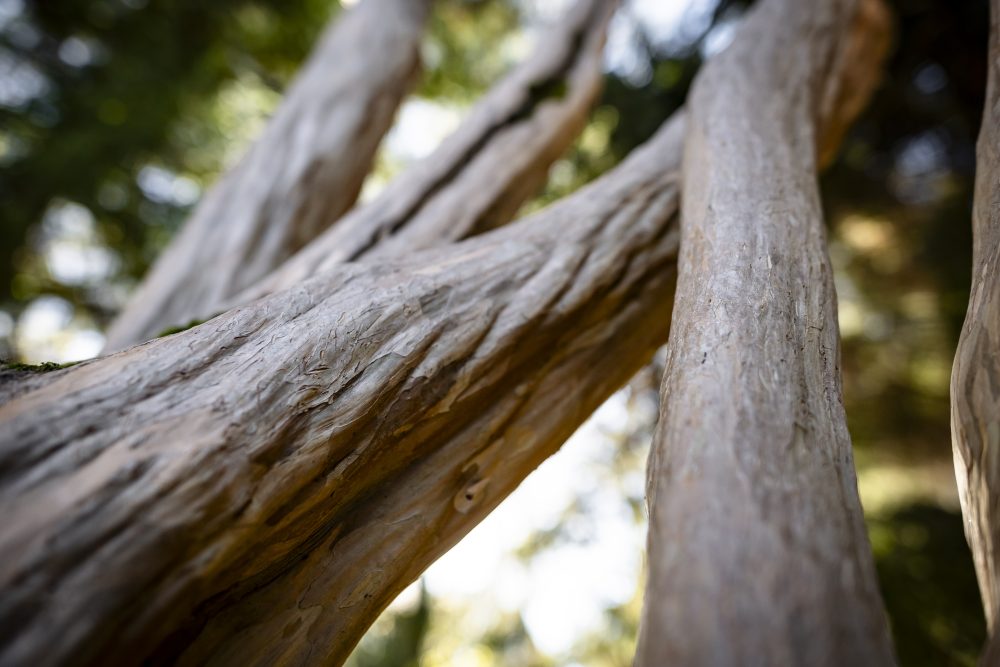The Lagerstroemia
We are standing before one of the two specimens of Lagerstroemia indica or crape myrtle which are present in the Park. The Lagerstroemia is called the “naked tree” because of its trunk and branches which are covered with a very smooth bark in beigey, yellow tones.
Due to its beautiful flowers, this plant is often placed in gardens, including public ones, for ornamental purposes. The flowers, which are pink, white, or purple, bloom generously in late summer, and in autumn the leaves take on warm tones of yellow and orange.
The Lagerstroemia is native to China, where the long clusters of flowers resembling crumpled silk, often decorate the entrances to temples. In India, however, its wood is used to build bridges and railway sleepers because of its hardness and resistance to termite attacks.
It was in India that the Swede Magnus Lagerstroem, director of the East India Company, saw it at the beginning of the 18th century and decided to send some plants to Linnaeus.
Linnaeus, regarded as the father of scientific classification, was already a renowned figure at the time. It is no surprise, therefore, that various scholars, travellers, botanical enthusiasts, and plant hunters sent him species from all over the world. Lagerstroem never knew he had discovered a new species, as he died before the news could reach him. Linnaeus, in honour of its discoverer, gave the new plant the name Lagerstroemia indica.

We are standing before one of the two specimens of Lagerstroemia indica or crape myrtle which are present in the Park. The Lagerstroemia is called the “naked tree” because of its trunk and branches which are covered with a very smooth bark in beigey, yellow tones.
Due to its beautiful flowers, this plant is often placed in gardens, including public ones, for ornamental purposes. The flowers, which are pink, white, or purple, bloom generously in late summer, and in autumn the leaves take on warm tones of yellow and orange.
The Lagerstroemia is native to China, where the long clusters of flowers resembling crumpled silk, often decorate the entrances to temples. In India, however, its wood is used to build bridges and railway sleepers because of its hardness and resistance to termite attacks.
It was in India that the Swede Magnus Lagerstroem, director of the East India Company, saw it at the beginning of the 18th century and decided to send some plants to Linnaeus.
Linnaeus, regarded as the father of scientific classification, was already a renowned figure at the time. It is no surprise, therefore, that various scholars, travellers, botanical enthusiasts, and plant hunters sent him species from all over the world. Lagerstroem never knew he had discovered a new species, as he died before the news could reach him. Linnaeus, in honour of its discoverer, gave the new plant the name Lagerstroemia indica.
Audio

